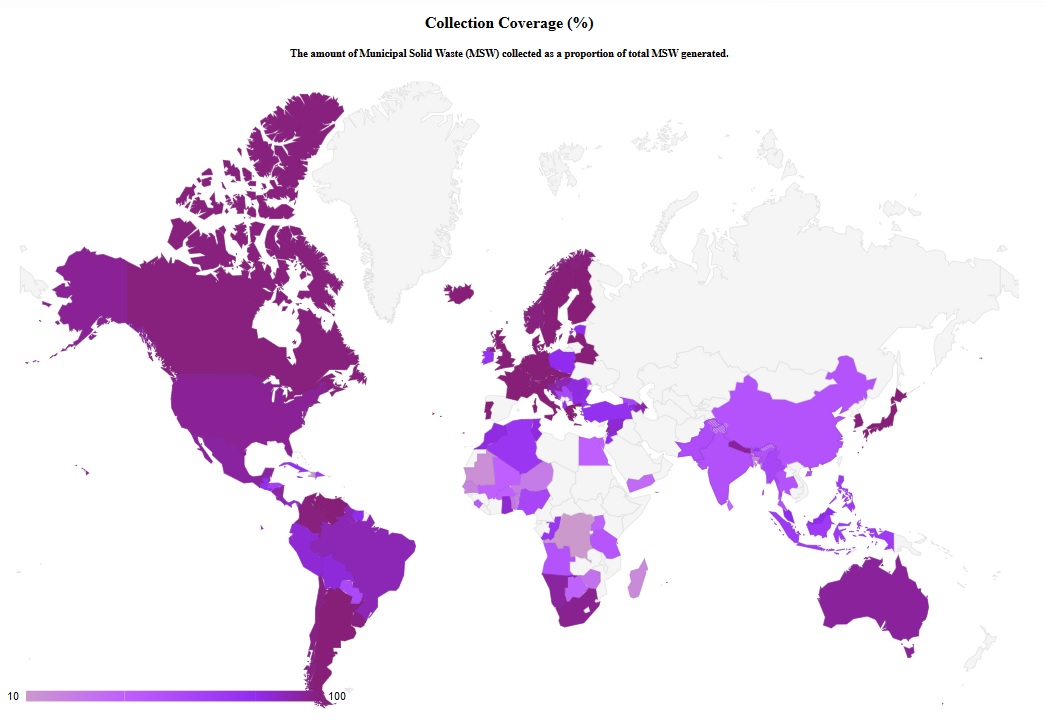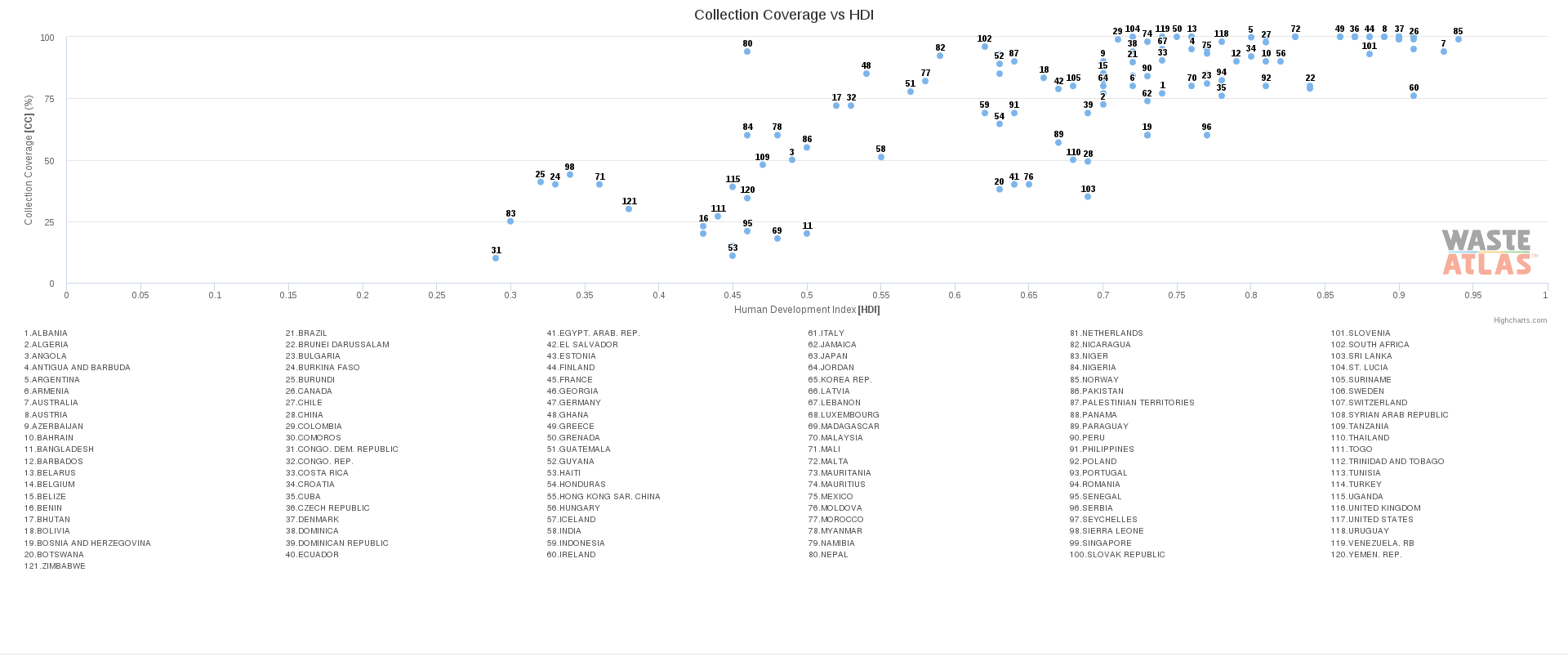My goal with this paper was to establish a fuller understanding of the global waste problem. By applying the DPSIR framework, it became possible to un-complicate the interdisciplinary nature of issues pertaining to solid waste. Waste generation is a growing issue with globalization operating at full capacity. Considering the impacts solid waste has on environment, economy, and humanity, it was difficult to narrow down a focus for a 3000 word paper. As I looked into the waste problems in different countries, it became clear that solid waste could not be fully examined in such a short essay. I chose to focus on topics that interested me throughout my research process such as organic waste, the zero waste strategy, and the informal sector.
Here are some issues that I chose to forgo in my essay for the sole reason that it would have taken an additional 3000 words to fully explain:
- Developed countries in North America and Europe are shipping their e-waste to lower income countries such as China, Taiwan, or Vietnam but this does little to solve waste problems because it is a global issue. Scavengers dig through these mounds of electronic waste in hopes of finding metals or parts that are of value, but they typically encounter health issues instead. Considering it is the fastest growing waste stream right now, this must be addressed in the near future.
- Waste management solutions are few and generally speaking ineffective. There have been far too many agreements made by nation leaders that have not made it to ratification. Initiative by the government and leading opinion providers need to be better dealt with.
- Solid waste has not been prioritized in most countries because it, like climate change, has delayed effects which could hinder policy making. Considering that solid waste is evident in every human inhabited country of the world, the impacts need to be mitigated. Solid waste effects are too serious to merely adapt to.
Now onto the research.
Throughout the research process, I would constantly go back to the Waste Atlas to visualize my findings. There are some great charts and interactive maps available for reference. Here are a few examples from the Waste Atlas. The first map shows the lack of data available in almost half the world when it comes to municipal solid waste collected and proportion of total municipal solid waste generated. The darker shades of purple show that most of the waste generated is collected.

This graph shows the correlation between collection coverage and the human development index in 120 countries. Again, there is a lack of data to cover the whole globe but a linear relationship is evident regardless.

Here are some excerpts that I think reflect my research and findings:
Informal Sector:
Waste is mainly disposed of in landfills with high income countries, whereas open pits and illegal dumping are most common in low income countries (Wilson 247). There are high discrepancies between waste management strategies in developed and developing countries where different stakeholders dominate. The informal sector collects municipal solid waste without being financed or recognized by the formal sector, deeming them illegitimate (242). These groups are entirely market driven meaning they collect waste, separate it, and sell it as a means of subsistence. This practice of door to door recovery is very common in developing countries where access to waste collection is low as a result of little government initiative (Zhang et al. 1626). In countries with large inequality gaps, it is expected that the informal sector will dominate. In China, there are double the amount of people practicing in the informal sector as there are in the formal, where the concentration of the waste pickers lies on the west side of the country (1628). This is evident when wealth distribution is considered throughout the nation. The bulk of China’s major metropolitans and business centers are concentrated along the east coast of the country which in turn, is directly correlated with the efficiency of waste collection services by the formal sector (1628). China is a significant force in studying waste management considering they house the greatest population globally, and are growing exponentially in economic development deeming them invincible when it comes to waste generation. The weight of management that policy makers have to carry is in this case, of great importance.
Organic Waste and Landfills:
Since there is no universal formula for the placement of landfills, incinerators or recycling plants, the effects from disposal sites are wide ranging depending on the surrounding environment. Although they are generally constructed away from residential areas to reduce the impact of noise, air and odor pollution, there are still exceptions to this convention in many parts of the undeveloped world. With landfills, their placement could include factors of convenience, land use, or environmental protection depending on the governing body. In developed countries, landfills are typically engineered to mitigate environmental impacts. For example, the barrier between the waste and soil pit is necessary to drain leachate from the landfill. Leachate is the leftover water contents of solid waste which has the potential to worsen with poor weather conditions, which is why landfills are typically covered. It drains to the bottom of the landfill and without a membrane to shield the soil, it will seep through the soil layers. This can negatively affect biodiversity, soil fertility, and groundwater supply (Zhang et al. 1629). Materials that contain high moisture content is most commonly organic waste, so it is suggested that the increase in food waste will have detrimental impacts on the environment (Song et al. 202-203). Depending on the disposal method and waste composition, various spheres of the environment are effected. Landfills in North America would have different impacts than landfills in Asia or Africa because of waste composition. In developing countries where the bulk of waste is composed of organic materials, air pollution also becomes a problem along with the leachate issues. It is mainly food waste that is being disposed of when organic composition is high and when organic waste decomposes anaerobically, that is without oxygen, methane is emitted (203). Biogas is treated in state of the art landfills, but since developing countries lack the technology and funds to treat methane gas, it is often uncontained. In the United States, landfill gas contributes 17% of the total methane emitted. Methane gas is environmentally lethal being more than 25 times as potent as carbon dioxide (203); the greatest contributor to global warming. Organic waste in landfills alone contributes to climate change, air pollution, soil degradation, human and animal health, and groundwater pollution as noted in the example of leachate. As a result, the state of the Earth is altered creating new challenges for policy makers. This raises questions as to what effect organic waste might have on the environment when it is burned, recycled or composted. Or to deepen the understanding of landfills, what would happen if plastics and packaging materials were to dominate landfill composition like it does in North America and Europe?
Zero Waste Concept:
To counter the increasing waste generation, the concept of zero waste has been widely adopted to promote recycling and product redesign (Song et al. 199). The theory being that material flow is circular with no components being sent to landfills or incinerators makes this concept appear utopian. Although the practice has been implemented in a number of countries, cities and companies with exceptional results, zero waste has not yet become mainstream. A few examples of zero waste adopters include the cities of Adelaide, Australia, and San Francisco, California, as well as companies like Coca Cola and Subaru US (204). All these corporations have made considerable efforts to minimize their waste generation either by the implementation of policy, reducing packaging waste, or recycling materials. Vancouver has also demonstrated progress in their goal of zero waste by 2020. Most recent data shows that the city has diverted 23% of waste from landfills or incinerators; nearly the halfway point of their goal to reduce waste disposal by 50% from 2008 levels (Zero Waste). Although efforts are being made, the timeline is troubling and at this point in the Greenest City Plan, it is unlikely that waste diversion will meet the nearing deadline. Regardless, this is a remarkable improvement compared to many other cities or countries who have not adopted any waste goals.
I came to the conclusion that solid waste management is not a problem that can be solved with technology (shocking). To mitigate the effects that waste has on the environment, economy, and humanity it is necessary for local authorities and governments to initiate action plans. Without the support of the government, citizens will not think waste is a problem that needs solving. It is equally important to include service users, that is people who use waste collection services to develop an effective strategy. When it comes to public services, people want to be aware and involved with government action. Educating the public on the health impacts are important, especially in developing countries where the most biogas and dumping occurs.
The full paper is available to read on a separate post if you are further interested in my research and conclusions.
Works Cited
Guerrero, Lilliana A., et al. “Solid Waste Management Challenged for Cities in Developing Countries.” Waste Management, vol. 33, no. 1, Jan. 2013, pp. 220-32, dx.doi.org/10.1016/j.wasman.2012.09.008, Accessed 21 Nov. 2016.
Song, Qingbin, et al. “Minimizing the Increasing Solid Waste Through Zero Waste Strategy.” Journal of Cleaner Production, vol. 104, Oct. 2015, pp. 199-210, dx.doi.org/10.1016/j.jclepro.2014.08.027, Accessed 21 Nov. 2016.
Wilson, David C., et al. “Comparative Analysis of Solid Waste Management in 20 Cities.” Waste Management & Research, vol. 30, no. 3, Mar. 2012, pp. 237-54, doi: 10.1177/073424X12437569, Accessed 21 Nov. 2016.
“Zero Waste.” City of Vancouver, 2016, http://vancouver.ca/green-vancouver/zero-waste.aspx. Accessed 21 Nov. 2016.
Zhang, Dong Q., et al. “Municipal Solid Waste Management in China: Status, Problems, and Challenges.” Journal of Environmental Management, vol. 91, no. 8, Aug. 2010, pp. 1623-33, dx.doi.org/10.1016/j.jenvman.2010.03.012, Accessed 21 Nov. 2016.